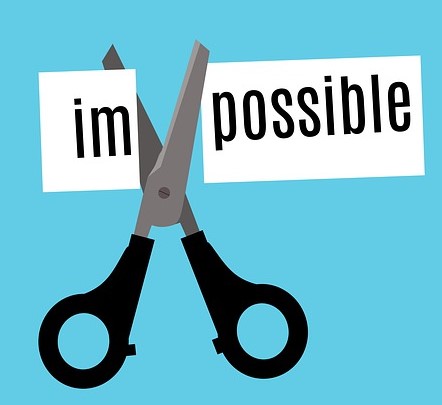
My marketing director was into martial arts, and always trained with someone at least 10% heavier and three inches taller. His theory was “if I can take down the big man, then I can take down anybody.”
He understands the value of adversity, which likewise is valuable for entrepreneurs. As I like to say, “adversity is like manure – it stinks but it helps us grow.”
The nature of “challenge”
A “challenge” is something that by its nature requires special effort. Some challenges are small (e.g. touch your toes) and some are big (e.g. climb Mount Everest). Life is loaded with challenges, and so is business.
But “adversity” is a special form of challenge, one where participation is not voluntary and where not meeting the challenge is costly. You lose nothing by not being able to touch your toes, but not meeting a business adversity could mean bankruptcy. Markets change against you, people will sue you, other companies are constantly innovating and taking your customers, and regulators throw a steady stream of compliance hurdle before you.
If you see these adversities for what they are – simple challenges that have a high priority – then it all becomes manageable and fun.
Navigating the dark room
Let’s say you wanted to climb Mount Everest. How would you go about it?
Odds are you would start with a little homework. Then you would talk to people knowledgeable about the process. Once educated, you would price out options, look at calendars, interview Sherpas, book travel, and buy your gear. In other words, you broke down the summit assault into a chain of manageable tasks, then went through them one by one. In doing so, you met the challenge.
An adversity challenge is no different. Let’s say a competitor has just introduced a game changer product. Would you panic, layoff all your employees and move to a cabin in the wilderness? Of course not. You would assemble a tiger team, evaluate the innovation, learn what the changing market needs are, see if this or another market is best suited, review your R&D pipeline for leapfrog opportunities, have the marketing team answer customer objections and defections, etc. This adversity was treated as a challenge.
What is remarkably different between an Everest-style challenge and a market realignment is the unknown. A lot of people have climbed Everest. Nobody has faced your particular competitive threat. You are, in effect, now navigating through a dark room. Being legally blind, having lost my eyesight mere weeks before my company was to IPO, this analogy is a favorite (and for the new Tough Things First reader, I went on to run my company for another 20 years after losing my vision).
Imagine that you are suddenly locked in a pitch-dark room and told there is a door on the other side, but the room is filled with furniture. How would you find and get to the door. This, like every other challenge, is a process of breaking down the parts. First, you do not react and do foolish things like running blindly in any direction. This would hurt you more than the furniture. You would likely go to your hands and knees (prevents falling over stuff), inch your way in one direction, striving to keep in that direction as you feel your way around obstacles. You do this because you know there is a wall somewhere – rooms do not go on forever. Once you find a wall you would go left or right, knowing that either direction will eventually lead you to the door. Stopping every foot or so, you would run your hands up and down to feel for hinges and doorknobs. Once you found them, you would leave.
Your business challenges and adversity are no different. If faced with a common challenge, you find a mentor who has dealt with it before. In an adversity situation, you break down the problem and find your way through the dark.
Manure for your employees
The great thing about all challenges, but especially adversity, is that we learn from it all, and that is both fun and good. The learning process makes us more agile, smarter, gracious, prepared and effective.
It does the same for your employees as well.
Much has been written about employee goal setting and “stretch goals”, ones that create a small amount of challenge, and often adversity, for employees. When asking an employee to “punch above their weight class” you are in effect establishing a challenge for them. This has two great effects. The first is that people are typically better than they think they are, and by providing them with a challenge, they have to use their brains to innovate. The innovation may be a simple improvement to process or a startling breakthrough development. Either way, the employee wins through achievement, the company wins by improved competitive capabilities, and the entire organization wins via great self-confidence about their collective ability.
The other wonderful effect is that you establish throughout your organization the belief that any challenge can be met. Think about that for a second, an entire corporation who says to one another “sure, we can do that.” That is the heart of an unbeatable company.
